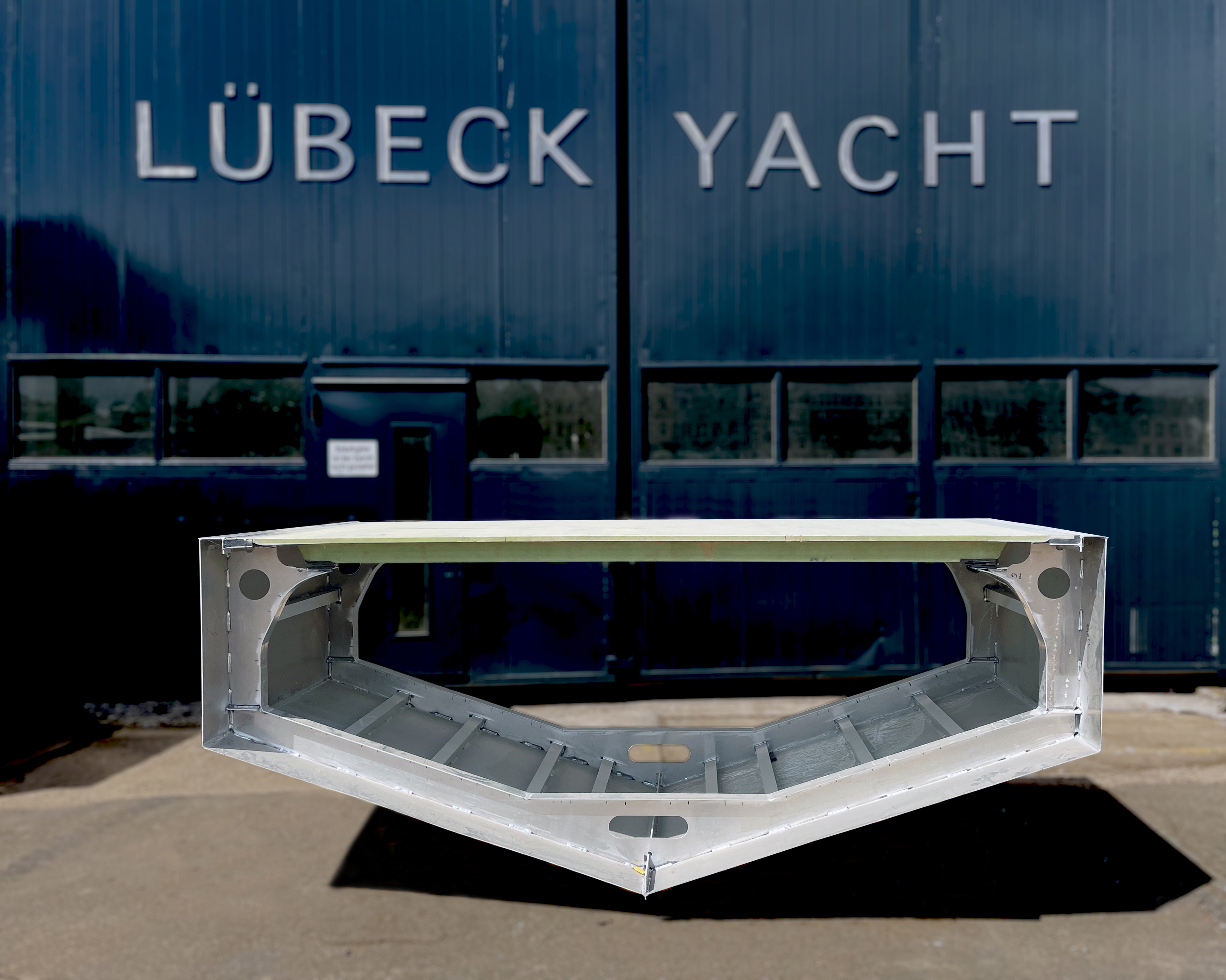Revolutionary workboat: lightweight, robust, and energy-efficient thanks to innovative bonding technology
In the “Hull-Deck Connection” (RDV) project, industrial partner Lübeck Yacht has developed a robust yet lightweight workboat to reduce the required propulsion power and thus the energy requirement during use.
The significant weight savings were achieved through a load-bearing deck structure made of fiber-reinforced plastic (FRP). A correspondingly adapted aluminum hull provides the necessary robustness. For joining materials with different thermal properties – such as aluminum and FRP – bonding with elastic adhesives is an ideal and application-oriented joining method.
Lübeck Yacht and its research partner Fraunhofer IFAM determined the mechanical, material and media requirements for the overall construction and the joint in order to optimize the design of the bonded connection between the hull and deck.
Based on these requirements, Fraunhofer IFAM defined an adhesive system and a corresponding pre-treatment process. Finite element (FE) calculations were used to demonstrate the basic feasibility of an adhesive bond between the hull and deck on a model of the workboat and a suitable adhesive layer geometry was derived.
Together, Lübeck Yacht and Fraunhofer IFAM produced a 1.5 meter long and 3 meter wide boat segment with the derived adhesive layer geometry in original size. This segment was mechanically tested under various relevant operating conditions. None of these tests resulted in structural damage to the structure or the bonded joint. Accompanying FE calculations underpinned the load-bearing capacity of the boat segment.
FE calculations were used to further optimize the geometry of the bonded joint for the entire workboat. The adhesive layer stress could be reduced to non-critical values by a moderate increase in the adhesive layer thickness (while maintaining the adhesive layer width). Ultimately, an economical adhesive volume could be used, as the adhesive layer stress is low in the selected joint geometry.
Offshore Drone Campus Cuxhaven (ODCC) - Innovative offshore UAS solutions
The Offshore Drone Campus Cuxhaven (ODCC) as part of the Fraunhofer IFAM was further expanded in 2023. The campus is used for the joint development and testing of offshore UAS (Unmanned Aircraft Systems, colloquially known as drones) and their deployment concepts. The focus is on the maintenance, inspection, servicing, and monitoring of maritime structures, taking regulatory framework conditions into account.
The aim of the ODCC is to tap into the great potential of UAS in the maritime service sector (e.g. surveys, maintenance, repairs, transportation, monitoring). To safely integrate the new technology, it is important to carefully consider manned aviation, maritime navigation, and environmental protection.
Due to the demanding offshore conditions, fault-tolerant and robust systems and drives are required. Continuous flight monitoring and reliable flight control are essential for the safe commercial use of offshore UAS. This includes collision avoidance systems, redundant communication and control units, navigation close to structures under variable environmental conditions and landing on floating platforms.
The campus in Cuxhaven, the center of the German offshore industry, pools the expertise of industry and research institutions. Office and workshop spaces for electrical and mechanical work were set up at the beginning of 2023. In November 2023, construction work began on the outdoor area with a runway and a control room, which will be completed mid-2024. Operations at the outdoor area will start in late summer 2024, including flights from Cuxhaven to Helgoland.
 Fraunhofer Institute for Manufacturing Technology and Advanced Materials IFAM
Fraunhofer Institute for Manufacturing Technology and Advanced Materials IFAM
